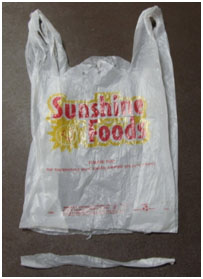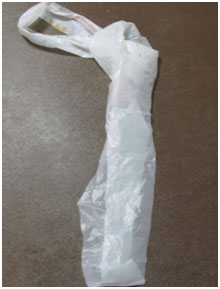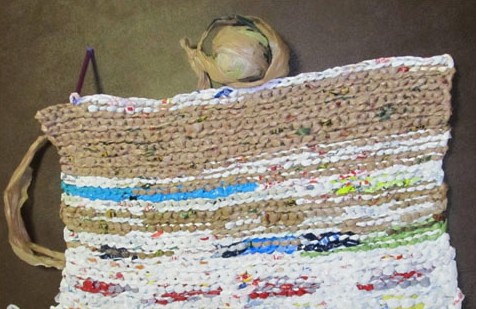By Becky Froehlich
- Green Spark 1: Use Passive Solar.
- Green Spark 2: Recycle What You Can.
- Green Spark 3: Recycle Creatively.
- Green Spark 4: Consider Powering Your Business with the Sun.
- Green Spark 5: Upcycle.
- Green Spark 6: Go Geothermal.
- Green Spark 7: Find Common Ground on Net Metering.
- Green Spark 8: Get an Energy Audit.
- Green Spark 9: Recycle and Make Money for Your Community.
- Green Spark 10: Use Reusable Bags.
- Green Spark 11: Encourage New Mothers to Breastfeed.
- Green Spark 12: Make Sleeping Mats From Plastic Bags to Help the Environment and Others.
How often do you run errands in a week? Chances are, each time your purchases come home in plastic bags.
According to the Environmental Protection Agency, the United States consumes about 380 million plastic bags each year. Only 5 percent of these are recycled—and the majority that is disposed of can take up to a thousand years to decompose.
Some concerned citizens have created a simple way to harness that hardiness against the elements for a positive effect. Plastic bags can be reused to create waterproof, weather-resistant sleeping mats. By crocheting strips of the bags together, you can create a flexible place to sleep that absorbs warmth while it wicks away moisture.
The Orphan Grain Train, a charity that provides food and clothing to those less fortunate worldwide, creates such mats. Milbank, S.D., hosts one Orphan Grain Train station and uses the bags that clothing donations come in to create sleeping mats. These mats are sent all over, from South America to Eastern Europe. During the past tragedies of Hurricane Katrina and Hurricane Sandy, these mats were especially necessary during times of relocation for victims. They provided a clean and efficient way for those affected to be able to receive needed sleep and rehabilitate.
For the last two years, I have taught the Mary Martha Guild at Our Savior Lutheran Church in Madison, S.D., the techniques for creating these mats. It’s a fun process that you can do even while watching TV—it’s easy, and still a great way to help others in need.
Contact
The Orphan Grain Train, which has a branch in Milbank, S.D.,
accepts sleeping mats for a variety of humanitarian needs. For
more information, contact the Milbank branch manager, Jeannette
Stensland, at 605-432-5612, or go to www.ogt.org.
Supplies
- Grocery bags
- Scissors/rotary cutter
- 8 mm or larger crochet hook
Directions
- Flatten out a plastic bag, matching up the sides. Cut the seam off closely.


- Cut the majority of the bag into approximately four strips. These strips should be 3”-4” in width. Recycle the unusable handles and the seam.


- Take two strips to begin the looping process. Thread one loop through the other, and then one end of the second ring through itself.


- Pull tight, and continue this process with your other loops.


- When this chain of loops becomes long enough, use the crochet hook to chain stitch it until at least 36” long. Use a loose single stitch and crochet until 6’ long.
These are two examples of progress in this craft and the finished product. You can stitch in pleasant patterns or place colors randomly. Either way, substance is serviceable over style in this project. The people these mats benefit would appreciate your effort either way, and the environment will certainly thank you.
 Dakotafire Get your spark here.
Dakotafire Get your spark here.





